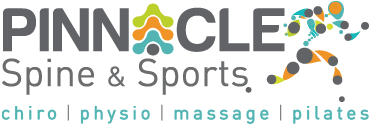In the next few blog posts we’re going to cover some of the basic components constituting to balance and posture. I’m also going to try to paint a bigger picture to help explain why so many of us get symptoms that we attribute to “bad posture” and why healthy state of the joint system doesn’t solely rely on passive care, but active involvement in your own well being!
 Proprioception (= joint position sense)
Proprioception (= joint position sense)
For starters, the importance of proprioception cannot be stressed enough as it is crucial to optimal joint system and postural function.
Proprioceptive input arises from the soft tissues in our bodies; muscles, ligaments, tendons, joint capsules… The information is conveyed by activation of a variety of mechanically sensitive receptors embedded in these tissues. Once the tissue is stretched to a particular direction, the receptors that detect that exact movement undergo a deformation due to the tensile forces stretching the tissues; in other words, both the connective tissue and the nerve cell inside it lengthen simultaneously. When this physical lengthening occurs the receptors (= the nerve cells, or “neurons“) start sending electrical signals (termed “action potentials” in neurophysiology) to inform the central nervous system about the change in state of the tissues.
At this point in time it is crucial to cover how the information is conveyed by the nervous system.
Once a neuron is activated it starts sending a continuous stream of electrical impulses that is related to the intensity of the stimulus. The more intense the stimulus, the higher the amount of electrical impulses sent. Those familiar with computers and binary numeral system, the nervous system functions essentially in the same manner; that is, the neuron in question will activate in full or doesn’t activate at all – it either sends the full action potential towards the nervous system or it “stays silent”. The information is represented as the pattern or the “rhythm” of electrical impulses/action potentials and this rhythm contains the information about the speed and amplitude of the change as it is related to the intensity of the stimulus, as discussed before. The more intense the physical force causing the stretch of the tissues, the more intense is the signalling by the neurons being stretched/activated.
Let’s take the spine (surprise surprise!) as an example. A movement occurs in the the spine in a certain direction (e.g. the person bends down to pick up an item). The soft tissues around the spinal joints undergo deformation in various directions as the spine starts to bend. The stretching of the tissues cause a massive activation of all of the neurons embedded in these tissues to inform brain about the positional changes that are happening due to the movement. The activation patterns of the neurons (i.e. the rhythm of the electrical impulses/action potentials sent by the receptor neurons) in these soft tissues contain the information about which part is moving to which direction, at what speed and what are the physical loads imposed on the particular structure. When this information is sent to the brain it then calibrates the appropriate control response to stabilise the whole structure as the movement is occurring. By now I hope you can see that a smooth and stable execution of movement consists of constant detection and motor response to the movements that occur in the spine. Sounds simple, doesn’t it? Well you might also want to know that the control of the spinal movement is beyond your conscious control (just try moving only the 7th vertebra in your spine to the right!), meaning that the movement detection and correct motor response (i.e. activation of muscles) work as a reflex based system that develops throughout your life and functions subconsciously. Naturally, the more this system is trained (e.g. by yoga) the faster, more responsive and more accurate the control becomes. Hopefully you can start to see now where degeneration of this control & response system can lead to…
More on the topic in the next post!
